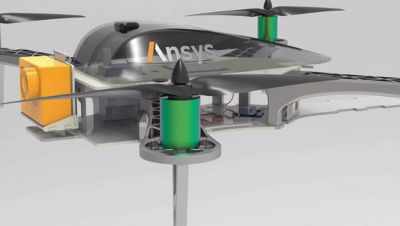Q3D 功能
了解頻率相關電阻、電感、電容和電導的寄生參數
Ansys Q3D Extractor 非常適用於設計用於高速電子設備的先進電子封裝和連接器,或者用於電力分配、功率電子和電動系統的高功率母線和功率轉換器組件。
Ansys Q3D Extractor有效地執行所需的 3D 和 2D準靜態電磁場模擬,以從連接結構中提取RLCG參數,進而自動生成等效的SPICE模型。這些高準確度模型可用於執行訊號完整性分析、研究電磁現象,以了解互連、IC 封裝、連接器、PCB、母線和電纜的性能。
Ansys Q3D Extractor有效地執行了所需的 3D 和 2D 準靜態電磁場模擬,以從連接結構中提取RLCG參數。
Ansys Q3D Extractor 是現代電子設計的寄生提取工具。Q3D Extractor 可以計算電子產品的頻率依存型電阻、電感、電容與電導 (RLCG) 的寄生參數。它是設計高速電子設備中使用的先進電子封裝和連接器的理想選擇。它還適用於配電、電力電子和電力驅動系統中使用的大功率母線和電源轉換器元件。
Ansys Q3D Extractor 是現代電子設計的寄生參數提取工具。Q3D Extractor 可以計算電子產品的頻率相關電阻、電感、電容和電導 (RLCG) 的寄生參數。它是設計高速電子設備中使用的先進電子封裝和連接器的理想選擇。它還適用於配電、電力電子和電力驅動系統中使用的大功率母線和電源轉換器元件。

2025 年 1 月
2025 R1 Q3D 版本引進了增強的源定義、接觸電阻建模和輻射場分析,為電路設計師和工程師提供了用於進階電源完整性和電磁分析的詳細見解。
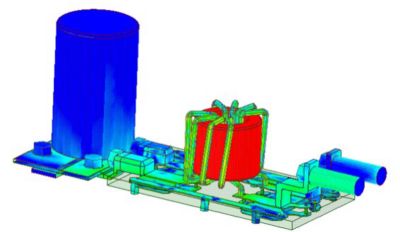
此功能使電路設計師和模擬分析師能夠定義具有複雜 R/L 值的源,從而在 HFSS 3D 佈局工作流程中實現詳細的相位掃描分析,以用於高科技應用中。
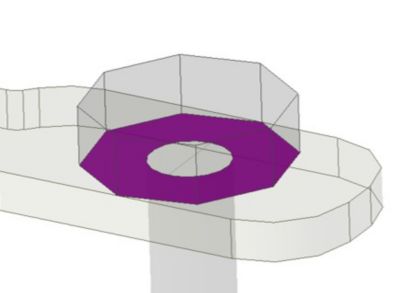
此增強功能可精確地將薄氧化層建模為接觸電阻,為半導體工程師和 IC 開發人員在用於高科技和電子產業的 HFSS-IC 工作流程中,提供關鍵的電源完整性見解。
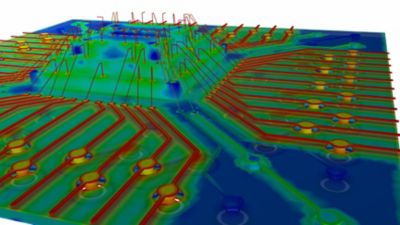
此測試版功能引進了類似 HFSS 的遠場計算,擴大了高科技和電子產業 AEDT 工作流程中,射頻工程師和電力電子設計師的分析範圍。
Q3D 功能
Ansys Q3D Extractor 非常適用於設計用於高速電子設備的先進電子封裝和連接器,或者用於電力分配、功率電子和電動系統的高功率母線和功率轉換器組件。
Ansys Q3D Extractor有效地執行所需的 3D 和 2D準靜態電磁場模擬,以從連接結構中提取RLCG參數,進而自動生成等效的SPICE模型。這些高準確度模型可用於執行訊號完整性分析、研究電磁現象,以了解互連、IC 封裝、連接器、PCB、母線和電纜的性能。
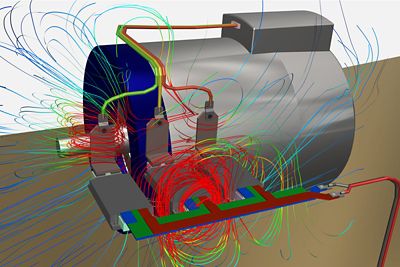
ANSYS Q3D Extractor 模擬和分析技術,可協助預測您的產品將在現實世界中如何發揮的淋漓盡致。
對 Ansys 而言,所有使用者皆能運用本公司產品非常重要,身心障礙者也不例外。因此,我們致力於遵循美國無障礙委員會 (第 508 條)、無障礙網頁內容規範 (WCAG)、自願性產品輔助工具範本 (VPAT) 的目前格式等各項無障礙要求。
如果您面臨工程挑戰,我們的團隊將隨時為您提供協助。憑藉豐富的經驗和對創新的承諾,我們邀請您與我們聯絡。讓我們共同合作,將您的工程障礙轉化為成長和成功的機會。立即與我們聯絡,開始對話。
